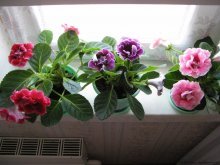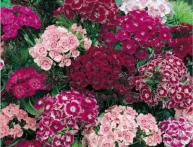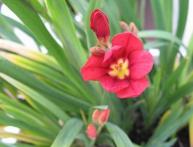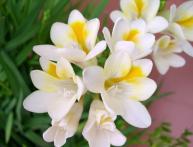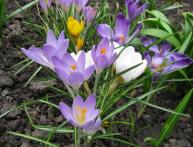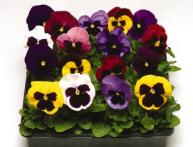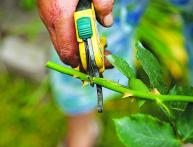Caring for gloxinia at home, planting and growing
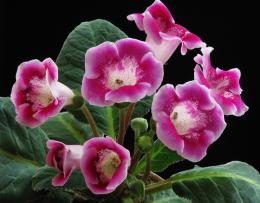
Gloxinia - became popular almost immediately after it came from America to Europe. In the wild, the plant is distributed mainly in warm and humid climates; it is also found in the Andes. To understand how to care for gloxinia at home necessary, you need to find out about its characteristics and preferences for living conditions.
Content:
- Gloxinia, description and features
- Planting gloxinia and conditions for its cultivation
- Planting material and flower planting
- Uhow to get gloxinia at home
Gloxinia, description and features
In the tropical regions of America, about 25 species of plants from the genus Gloxinia, the Gesneriaceae family, are found. Almost all are perennial herbaceous or subshrub plants.
The underground part of gloxinia is represented by tubers and scaly rhizomes. The leaves are large, petiolate, pubescent or smooth. Stems are straight. The flowers are bell-shaped or cup-shaped. The coloring is very diverse, there are variegated and bordered flowers. The flowers are delicate and velvety. In recent years, many terry varieties have appeared.
A feature of most gloxinias, which grow indoor conditions is that after lush flowering the flower fades and disappears completely. However, the complete death of the ground parts does not mean the death of the flower. So the flower goes into the dormant stage. Under natural conditions, gloxinia grows in the lower tier of the forest.

There is almost always quite a lot of shade, warmth and moisture. But periods of high humidity are followed by dry periods. To survive at this time, gloxinia sheds its leaves. The nutrients accumulated in the tuber help the flower survive the unfavorable period. As soon as a new wet period begins, the flower begins to grow again.
The best and most popular varieties are:
- Bohemia - bright red double flowers with a pink border on medium-length peduncles
- Yesenia - double, dark cherry flowers, sometimes beet-colored and even tinged with a rich solution of potassium permanganate, velvety petals, one of the most luxurious varieties
- Hollywood - variety with simple flowers of dark purple color, with a wavy edge
- May Queen - flowers varieties simple, white with a wide light pink border
All features of the flower must be taken into account when growing and indoors.
Planting gloxinia and conditions for its cultivation
Lighting and soil
Taking into account the fact that in the wild the plant exists under the protection of the leaves of taller trees and shrubs, then in indoor conditions the flower should be placed in places with diffused light. Windows oriented to the east or west are best suited for this. In the direct sun of the southern side, the plant will form shortened peduncles, and in a dark northern window its flowering will be too sparse.
Loose mixtures are suitable for planting and growing gloxinia. To do this, just mix two parts of leaf soil with one part of sand. The acidity of the soil should be close to neutral. Ready-made mixtures are suitable soil for growing indoor violets.
Temperature and watering
The plant feels good at a stable temperature without sudden fluctuations. In the daytime it is + 20 + 22, and at night + 18. During the rest period, you need to move the pots with gloxinia to a room where the temperature is + 14 degrees.
Taking into account the life cycle of the plant, from the beginning of spring it is necessary not only to regularly water flower, but also carefully spray it. After spraying, droplets of water are shaken off the leaves. Watering is significantly reduced with the onset of autumn. The plant spends the winter in a fairly dry room.
Planting material and flower planting
Gloxinia is most often propagated at home:
- leaf cuttings
- tubers
- seeds
- dividing the tuber
Video about proper care of gloxinia:
Young leaves plucked from the plant during the period of bud formation are suitable for the role of leaf cuttings. The leaf must have a stalk of at least 2 cm. It can be rooted in two ways:
- put in water until the roots appear, after they form, transplant into the ground
- mix peat with sand in a ratio of 1 to 4, moisten the mixture, deepen the cutting to the middle of the leaf blade, cover with a jar for about 20 days, when the roots appear, the jar can be removed
Seeds are sown at the beginning of winter on the surface of moist soil, covered with transparent material and kept in a sunny place until shoots appear after two weeks. At the stage of two true leaves, the seedlings are transplanted into separate pots. When there are five or six leaves, the flower can be planted in a pot.
Important! In pots where gloxinia will grow, it is necessary to arrange a drainage layer, this will protect against stagnation of moisture and rotting of the tubers.
Caring for gloxinia at home
Care Gloxinia, although not complex, has its own specific features and characteristics. It is important to properly care for the plant both during the dormant period and during the growing season. With the beginning of spring, place the pot in a well-lit place and begin to water it regularly. Both tray and top watering are possible.
It is important to let the top layer dry and not get it on the leaves and flowers during watering. In August, watering is done more rarely, and at the end of September it is stopped completely. As soon as the leaves begin to dry out, they need to be completely cut off and the pot moved to a dark and cool place.
If the plant spends the winter in a damp room, then it is sufficient to water it moderately once every three weeks. If the room is dry, then gloxinia should be watered once every 15 days during the dormant period.
The plant can be induced to bloom again. To do this, after the first wave of flowers, you need to cut off all the flower stalks and almost all the leaves. It is enough to leave no more than 2-3 of the strongest and healthiest lower leaves on the plant. Stepchildren will begin to appear in the axils of these leaves. Of these, leave a couple of the strongest ones, and remove the rest.
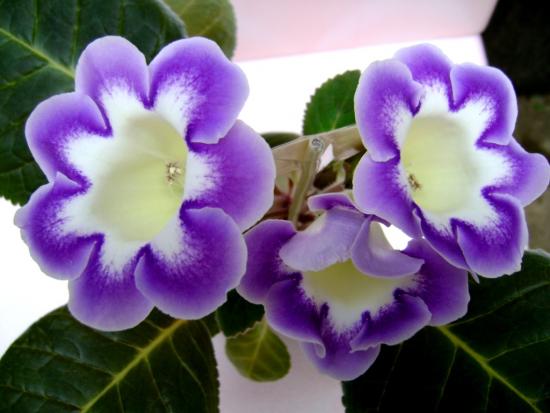
At this time, the plant needs feeding to stimulate growth. And although the second flowering is much more modest, it still pleases the eye of the gardener. Sometimes gloxinia is affected by pathogenic fungi. To treat it, foundationazole is used. In general, this flower is quite tolerant to diseases, and to growing conditions.

